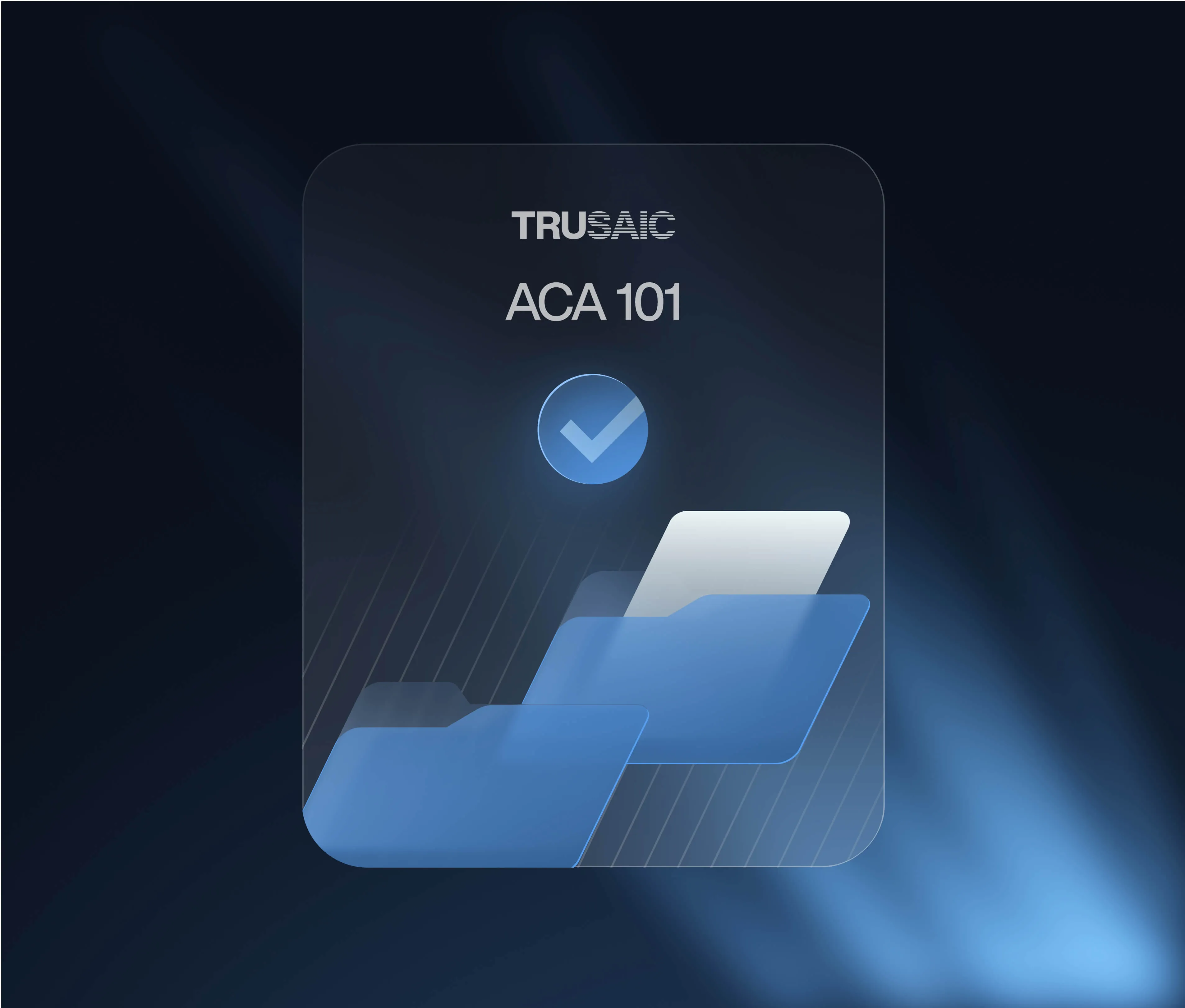Introduction
IRS Letter 226J is a penalty notice issued by the IRS to Applicable Large Employers (ALEs) or employers with 50 or more full-time employees and full-time-equivalent employees who have had a full-time employee receive a Premium Tax Credit (PTC) from a state or federal health exchange for one or more months.
When the employee receives a PTC, the IRS will evaluate the employer’s ACA compliance in accordance with the Employer Shared Responsibility Provision of the ACA, commonly referred to as the Employer Mandate.
To comply with the ACA’s Employer Mandate, ALEs are required to offer Minimum Essential Coverage (MEC) to at least 95% of their full-time workforce (and their dependents) whereby such coverage meets Minimum Value (MV) and is affordable for the employee or be subject to IRS 4980H penalties, known as Employee Shared Responsibility Payments (ESRPs), issued to employers by the IRS in Letter 226J penalty notices.
Under the Employer Mandate, the ALEs are required to file information returns describing the status of their healthcare coverage of their employees with the agency and furnish statements to their full-time employees relating to whether they provided health coverage to the employees (and their dependents), and if so, certain details about that health coverage.
For any month in which an employer is assessed a penalty because a full-time employee obtained a PTC, if the organization did not offer health coverage to at least 95% of its full-time workforce (and their dependents) for that month, the IRS may subject the employer to an IRC Section 4980H(a) penalty (the “A” penalty).
Conversely, if the employer did meet the 95% threshold for that month, but the full-time employee who obtained the PTC was not offered health coverage, or if the coverage was not affordable and/or did not meet Minimum Value (MV), then the penalty assessed will be an iRC Section 4980H(b) penalty (the “B” penalty). IRS Letter 226J contains the following:
- An Employee Shared Responsibility Payment (ESRP) summary table itemizing proposed payment by month and indicating for each month whether liability falls under Section 4980H(a), Section 4980H(b), or neither.
- Form 14764, also known as an Employer Shared Responsibility Response Form or an ESRP Response.
- Form 14765, also known as an employee Premium Tax Credit (PTC) List. This form is intended to identify, by month, an ALE’s assessable full-time employees (individuals who for at least one month during the year were full-time employees allowed a PTC for one or more months and for whom the ALE did not qualify for an affordability safe harbor or other relief (see instructions for Forms 1094-C and 1095-C, Line 16), and the indicator codes, if any, as reported by the ALE on lines 14 and 16 of each assessable full-time employee’s Form 1095-C.
- A description of the actions the IRS will take if the ALE does not provide a timely response to Letter 226J.
The objectives of this resource are to outline how the IRS issues Letter 226J, how ACA penalties are assessed, what triggers ACA penalty assessment, and how to respond.
The history of Letter 226J
Employers first started receiving IRS Letter 226J in late 2017 for the 2015 tax year. This enforcement of the Employer Mandate by the IRS caught many organizations by surprise.
The IRS identified 49,259 employers at risk for compliance action for the 2015 tax year. In theory, under the standard statute of limitations, ACA penalties can be assessed by the IRS up to three years from the filing date or due date, whichever is later. However, recent case law has held that there is no statute of limitation. In other words, the IRS has no deadline. More than $4.5 billion in penalties were issued to employers for the 2015 tax year.
In March 2018, the Treasury Inspector General for Tax Administration (TIGTA) issued a report on the ACA. The report stated that the IRS had the data and processes in place to begin the analysis to calculate the potential penalties for the 2016 tax year to be assessed against those employers determined not to be in compliance with the ACA.
In August 2018, the IRS started laying the groundwork for Letter 226J penalty notices for the 2016 tax year by issuing Letter 5699 to organizations believed to be ALEs that failed to file ACA information returns (Forms 1094-C and 1095-C) for the 2016 tax year. In Letter 5699 – the IRS form titled “Request for Employer Reporting Offers of Health Insurance Coverage (Forms 1094-C and 1095-C)” – the tax agency asks employers to confirm the name the ALE used when filing its ACA information, provide the Employer Identification Number (EIN) submitted, and confirm the date the filing was made or will be made. For the 2016 tax year, the information obtained from Letter 5699 helped identify those employers to which the IRS would send Letter 226J penalty notices.
In January 2019, the IRS started to issue a new set of ACA-related penalties under IRC Section 6721/6722 to employers it identified as having failed to distribute Forms 1095-C to employees and to file Forms 1094-C and 1095-C with the IRS by the required deadlines for the 2015 and 2016 tax years. These penalties are independent from the IRC Section 4980H penalties for not offering required healthcare coverage. The penalties have been issued using Letter 5005-A/Form 866-A, relying on W-2 counts instead of full-time employee counts, which can lead to an overestimation of penalties.
Since 2019, the IRS has issued 226J letters roughly two years after the end of the applicable tax year. In December 2024 the IRS began issuing 226J penalties for the 2022 tax year.
How ACA penalties are assessed
Penalties are assessed to Applicable Large Employers (ALEs) – those employers with 50 or more full-time or full-time-equivalent employees – to notify them of a proposed Employee Shared Responsibility Payment (ESRP) for failing to comply with the ACA for a specific tax year.
They are assessed via annual ACA information returns filed with the IRS using Forms 1094-C and 1095-C. If your organization had one or more employees who received a Premium Tax Credit (PTC), the IRS will use your annual ACA filings to calculate penalties. A 2018 report from the Treasury Inspector General for Tax Administration (TIGTA) noted the IRS’s use of the Affordable Care Act Compliance Validation (ACV) system, which automatically identifies non-compliant ALEs. IRS Letter 226J contains one of two penalties. Below are the two types and the method the IRS uses for determining the penalty amount.
The “A” Penalty
This penalty will be triggered if an ALE failed to offer Minimum Essential Coverage (MEC) to at least 95% of its full-time workforce and their dependents and at least one full-time employee receives a PTC. Here is an example of a 2021 monthly penalty calculation: $2,700/12 per month x [the total number of full-time employees minus 30 employee exemptions].
The “B” Penalty
If the ALE met the 95% offer threshold but failed to offer affordable and Minimum Value (MV) coverage to a full-time employee, the penalty assessed will be a “B” penalty instead of an “A” penalty. This penalty is triggered for each full-time employee who receives a PTC when purchasing health insurance from a government exchange (such as HR.gov) because he or she indicated to the exchange that coverage was not offered by the employer, or that the offered coverage was unaffordable and/or did not meet Minimum Value (MV). Here is an example of a 2021 monthly penalty calculation: $4,060/12 x [the number of full-time employees receiving PTCs for each month].
Exchange notices
An exchange notice is issued to employers by state and federal health exchanges notifying the employers that at least one employee applied for health coverage through a federal or state health exchange and was deemed eligible to receive a premium tax credit (PTC).
A PTC is a refundable tax credit designed to help eligible individuals and their families with low or moderate income afford health insurance purchased through the marketplace exchange. The employee is deemed eligible for a PTC because he or she met the income requirements and claimed that he or she did not receive an offer of Minimum Essential Coverage (MEC) from his or her employer or did not receive an offer of coverage that was Affordable and met Minimum Value (MV). When an employee obtains a PTC, in theory, the exchange issues a notice to the employer that the employee received a PTC.
The organization will then have 90 days from the date of issue to contest the notice as inaccurate or unjustified. Failure to successfully appeal an exchange notice will likely result in the exchange sending notice to the IRS which could then trigger the IRS Letter 226J, the IRS penalty notice for ACA non-compliance. It is important to note that the only trigger for an organization to receive a Letter 226J is when a full-time employee receives a PTC from a federal or state health exchange.
Upon receipt of an Exchange Notice, employers have two options:
- Attempt to appeal the notice
- Ignore it and wait until your organization receives IRS Letter 226J
To successfully appeal the exchange notice, an organization must have documentation readily on hand. Proof of the offer of coverage and the details of that coverage are important to successfully appealing the notice. The employer will need to prove that the employee received an offer of coverage from the employer that met Minimum Value (MV), Minimum Essential Coverage (MEC), and allowed dependents to enroll. An employer has 90 days from the date of the notice to request an appeal. In appealing the notice, the employer should prepare an appeal packet demonstrating that it had offered the appropriate health care coverage to its eligible employees.
The appeal packet should contain the following documentation:
- A summary of benefits and coverage, a short plain-language summary of the health plan’s benefits
- An enrollment/waiver form
- Proof of offer of coverage to full-time employees and their dependents
- Proof of affordability
Notably, the exchanges have not consistently issued the exchange notices. Often the employer’s first notice that one or more of its employees received a PTC has been the IRS Letter 226J.
How to respond to a Letter 226J
If you receive Letter 226J, how you respond to the IRS may vary depending on the tax year for which penalties have been assessed. The rules have differences based on transition relief and also to address changes in the Employer Mandate. The first thing an organization should do in responding to IRS Letter 226J is to carefully review the penalty notice, the relevant summary table, the types of penalties being assessed, and how many employees received a PTC.
Following this review, the organization is encouraged to take the following key steps:
- Provide information to the IRS by the response date shown in the letter, which will be 30 days from the date the letter was issued. The letter will contain the name and contact information of a specific IRS employee that the Applicable Large Employer (ALE) should contact if the ALE has questions about the letter.
- Respond in writing, either agreeing with the proposed Employee Shared Responsibility Payment (ESRP) or disagreeing with part or all of the proposed penalty assessment. The notice will provide instructions on how the ALE should respond.
How the IRS acknowledges your 226J response
An ALE has 30 days to respond from the date of the Letter 226J Penalty Notice. If the ALE does not respond, the IRS will assess the amount of the proposed ESRP shown in Letter 226J and will issue a Notice and Demand for Payment (Notice CP 220J). The notice offers directions to pay the penalty.
The IRS will issue one of five different versions of IRS Letters 227 to employers in acknowledgement of their 226J response. The different versions describe additional actions that may be required of an employer to address the proposed ESRP. They are listed here:
Letter 227K: This letter indicates that the case has been resolved in the employer’s favor. Essentially, Letter 227K acknowledges that the information in the employer’s response to Letter 226J was accepted, the employer does not owe an ESRP, and the IRS has closed its inquiry.
Letter 227L: The IRS sends this version of the letter when it agrees with the employer that the amount of the ESRP owed should be reduced. While the employer will still have to make a payment, it won’t be as much as originally requested.
Letter 227M: This version of the letter is issued by the IRS when it disagrees with the employer’s response to Letter 226J and reiterates its demand for the original penalty assessment.
Letter 227J: Letter 227J acknowledges the receipt of the signed response to Letter 226J Form 14764, in which an organization agrees to pay the ESRP as assessed. After an employer receives this letter, the case will be closed. No response is required other than to complete payment of the penalty.
Letter 227N: Letter 227N acknowledges the decision reached in Appeals and shows the ESRP based on the Appeals review. After issuance of this letter, the case will be closed. No response is required.
After receiving the IRS’s response, if the client still disagrees with the proposed or revised penalties, the employer may request a pre-assessment conference with the IRS Office of Appeals. This is done in accordance with the instructions for requesting a conference provided in Letter 227 and in IRS Publication 5, “Your Appeal Rights and How to Prepare a Protest if You Don’t Agree.” The conference should be requested in writing by the response date shown on Letter 227, which usually will be 30 days from the date of the letter.
It is important that your organization respond to all IRS notices. Failing to reply to a Letter 226J or any of the variants of Letter 227, where appropriate, will likely prompt the IRS to formally assess the amount of the proposed ESRP and issue the employer a Notice and Demand for Payment, Notice CP 220J.
Additional penalties for failure to comply with the ACA
The IRS started issuing IRS Letter 5699 in August of 2018 to employers that the agency identified as being Applicable Large Employers (ALEs) that failed to file information returns for the 2015 and/or 2016 tax years. The agency is currently issuing Letter 5699 for the 2022 tax year.
The Letter 5699 asks employers to confirm the name the ALE used when filing its ACA information, and to provide the Employer Identification Number (EIN) submitted and the date the filing was made or will be made. This can serve as a precursor to the issuance of additional IRS notices that may assess ACA penalties.
In the event your organization does not reply to Letter 5699, penalties under IRC Section 6721/6722 are assessed in Letter 5005A. IRS Letter 5005A is issued under IRC Section 6721/6722 to ALEs that failed to furnish Forms 1095-C to employees or file Forms 1094-C and 1095-C with the IRS. These notices focus on the failure of ALEs to distribute Forms 1095-C to employees and to file Forms 1094-C and 1095-C with the tax agency by required deadlines. The IRS issues Letter 972CG to ALEs who filed their ACA information returns, but did so after the IRS deadlines established in IRC Section 6721.
Organizations looking to avoid ACA penalties should start with their ACA annual filings submitted to the IRS. There are a number of common errors that can weigh significantly on the severity of penalties proposed by the IRS in Letter 226J.
Common errors in Forms 1094-C and 1095-C
Overstatement of full-time employee counts
This error is probably the most significant because it directly relates to the ACA penalty amount proposed in IRS Letter 226J. One of the most complex and critical components of Employer Mandate compliance is being able to correctly identify an employer’s full-time workforce. Any “A” penalties assessed are based on the stated full-time counts for each month of the reporting year provided on Form 1094-C. If these numbers are reported incorrectly, the proposed penalty amount could be significant.
In determining the full-time employee count, an organization may use one of the two IRS-approved measurement methods to prove employment status for recipients of PTCs. The IRS may also require additional information from employers, which, if the Look-Back Measurement Method was used, may include the following: a statement explaining how that method was applied to assess the employee in question, whether the employee was full-time or not, whether the employee was in a limited non-assessment period, whether the employee was offered coverage that met Minimum Value and whether the amount of the self-only monthly contribution rate satisfied affordability.
Code errors
In conjunction with an employer’s full-time employee counts, the codes on the Form 1095-C ultimately determine if and for which month(s) an organization may be subject to IRC Section 4980H penalties. Line 14 identifies information about the health coverage offered, if any, to the employee, spouse, and dependents. Line 15 identifies the lowest cost contribution for self-only coverage IF the plan did not meet the Federal Poverty Level safe harbor.
Line 16 indicates why a penalty could not be assessed for a particular month because a safe harbor applied. If the wrong code combinations were entered, an employer may be subject to a significant penalty assessment.
If an employer offered Minimum Essential Coverage to at least 95% (70% for 2015 only) of full-time employees for all 12 months, employers should check the “All 12 Months” box on Form 1094-C. Failing to do so immediately indicates to the IRS that, for certain months, an employer did not offer coverage that met the requirements of the ACA. Again, this error is likely to result in significant penalty assessments.
How to avoid receiving Letter 226J and IRS penalties
Employers should consider performing an ACA Penalty Risk Assessment to review previous years’ ACA filings. Doing so will allow employers to identify errors and make necessary filing corrections, minimizing critical exposure to IRS penalties. Elements of an ACA Penalty Risk Assessment should include the following:
Calculation of potential risk exposure
A penalty risk assessment requires methodology that will calculate a total penalty exposure amount in the same way the IRS calculates penalties. For example, analyzing the previous years’ Forms 1094-C and 1095-C will help verify the accuracy of full-time employee counts over 12-month periods. A review of IRS code combinations on the Forms 1095-C can be assessed to identify which employees pose an IRC Section 4980H penalty risk. Additionally, the potential IRC Section 6721/6722 penalty exposure can be determined. If the code combinations on a particular 1095-C are inaccurate, the current penalty of $290 per form can be assessed for submitting “non-accurate” filings.
For example, if there is a code 1H (No Offer) on Line 14 for all 12 months and a code 2G (FPL Safe Harbor) on Line 16, this not only does not make sense, insofar as a safe harbor cannot be claimed when no offer of coverage is extended (subjecting an organization to an IRC Section 6721/6722 penalty for inaccurate filing), but it also subjects the organization to a potential IRC Section 4980H(a) penalty for failing to offer coverage to a full-time employee. The IRS is issuing these IRC Section 6721/6722 penalties through Letter 5005-A.
Identification of errors in previous ACA filings
Reviewing the data submitted in ACA information return filings allows for the identification of errors in submissions. Errors such as discrepancies between the total number of Forms 1095-C and the full-time count listed on Form 1094-C, incorrect EINs, and incorrect 4980H Transition Relief and Minimum Essential Coverage indicators should be checked. In the event that these types of mistakes are present, they must be corrected.
Correction of previous years’ filings
An effective ACA Penalty Risk Assessment will allow your organization to make corrections to previous years’ filings before being issued a Letter 226J by the IRS. Making changes to identified errors in your 1095-C filings, such as offer of health coverage coding, relevant dependent listing, affordability coding, and full-time employee counts, can be submitted to the IRS as part of a corrected filing. Corrected filings sent before receiving a Letter 226J reduce the penalty exposure for an organization.
Establishment of a process for better ACA compliance
Once an organization has identified and corrected previous mistakes, it is essential to review the ACA compliance process to determine whether there is a need to implement new practices, educate staff on their ACA compliance responsibilities, and create a better, more efficient process moving forward. Practices such as extending offers of health coverage, benefits structure, proper implementation of the right IRS approved measurement method, affordability determination, and tracking offers of coverage are just a few things to consider. Making improvements to current processes will reduce the risk of receiving Letter 226J in the future.
Good ACA compliance practices include:
- A monthly compliance process
- Mastery of the five dimensions of data quality
- Utilizing the right measurement method
- Properly documenting offers of health coverage
- Having health benefits information readily on-hand
- Accurate tracking of employees’ hours
- Correct classification of workforce statuses
- Retaining supporting documentation
- Offering an affordable health coverage plan
Given the complexities of ACA compliance, from clean data to proper analytics to regulatory expertise, many organizations opt to partner with a trusted ACA compliance vendor to reduce their penalty risk.








